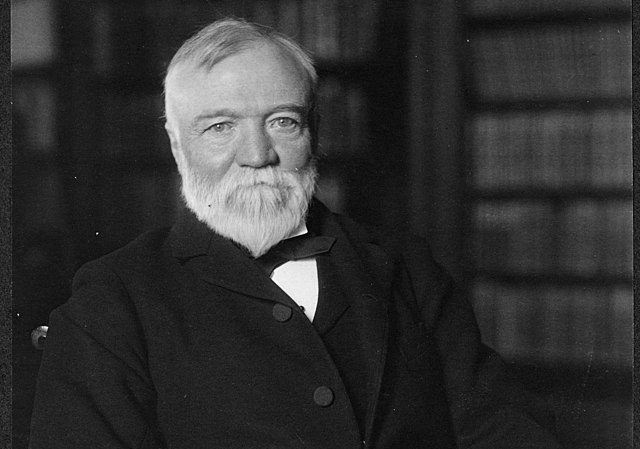Andrew Carnegie: The Billionaire Who Died Broke (on Purpose)
Imagine amassing a fortune so massive it could rival nations, only to give nearly all of it away. That’s exactly what Andrew Carnegie did. And not out of guilt or PR spin, but because he truly believed money should serve humanity, not just its owner.
Rags to Riches, for Real
Carnegie wasn’t born into wealth. In fact, his early life reads more like a Dickens novel than a CEO profile. He was born in 1835 in a one-room cottage in Scotland. His family was so poor they shared a single bed. When he was 13, they emigrated to the United States in search of a better life. Carnegie started as a bobbin boy in a cotton factory. He made $1.20 a week.
That’s not a typo.
Through a mix of brainpower, networking, and good timing, he worked his way up. Telegraph operator. Railroad assistant. Investor. Eventually, he built Carnegie Steel, which he sold in 1901 for $480 million (about $17 billion today).
He was one of the richest men alive. And then he started giving it all away.
Giving It All Back
By the time he died in 1919, Carnegie had donated over 90% of his fortune. Schools. Libraries. Museums. Scientific research. He believed in lifting people up, not just handing them cash. His famous line? “A man who dies rich, dies disgraced.”
He funded over 2,500 libraries. He helped establish Carnegie Mellon University. His money founded the Carnegie Institution for Science, the Carnegie Foundation, and countless smaller projects.
To him, wealth came with moral responsibility. You could enjoy it, sure, but you had to reinvest it into society.
Why He Matters Today
We live in a world where billionaires buy social media platforms, yachts, and sometimes, political influence. But Carnegie? He built concert halls and universities.
He didn’t want a statue. He wanted a smarter, more educated, more curious world.
This wasn’t about charity in the warm-and-fuzzy sense. Carnegie was strategic. He thought the best way to help people wasn’t just giving them fish. It was building the damn fishing school. Give them tools. Let them grow.
Not a Saint, But Still Inspiring
Was he perfect? Absolutely not. He was a ruthless capitalist before he became a philanthropic icon. His workers weren’t exactly living their best lives, and the infamous Homestead Strike of 1892 stained his legacy.
But here’s the twist: he saw the flaws. He wrestled with them. And in the end, he chose to use his fortune not to entrench power, but to dismantle barriers.
That kind of evolution matters.
What Would Carnegie Do?
Carnegie’s story isn’t just history. It’s a mirror. What are we doing with what we have? Whether it’s time, talent, or money, are we hoarding it? Or using it to lift others?
He died with about $30 million left, which today would barely get you a mansion in L.A. But his real legacy isn’t gone. It’s sitting on the shelves of a Carnegie library. It’s in a classroom he helped build. It’s in the idea that money is a tool, not a throne.
Source:
1. Carnegie Mellon University – History
2. History.com – Andrew Carnegie
3. Nasaw, David. Andrew Carnegie. Penguin Books, 2007.

